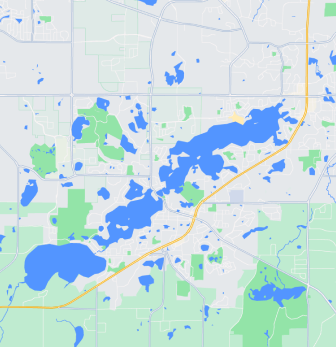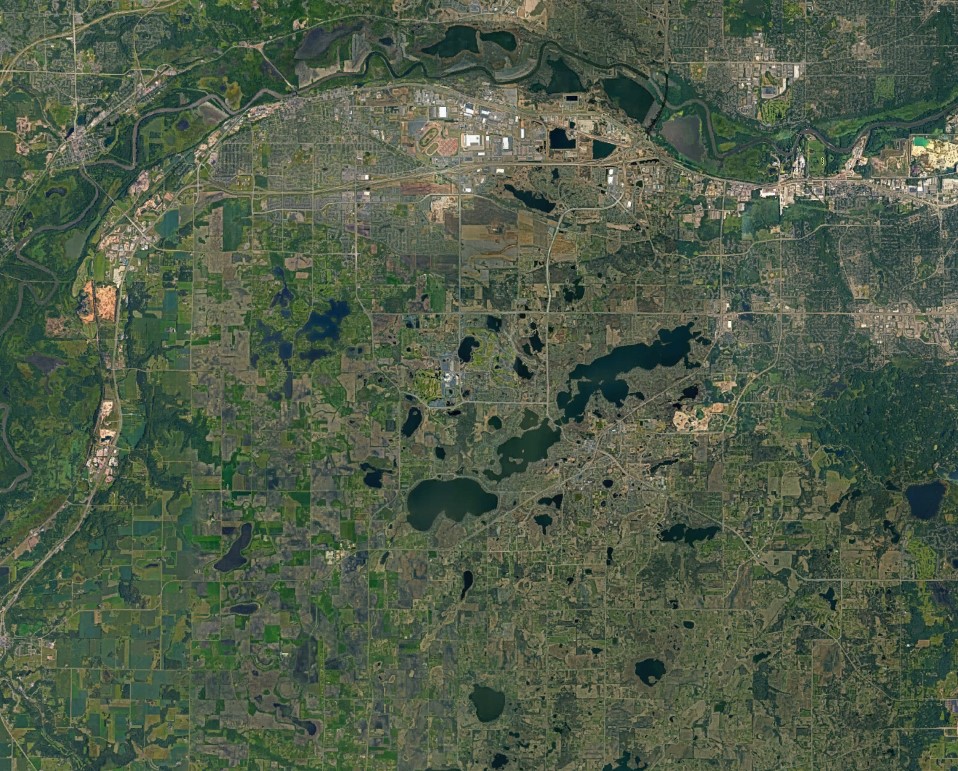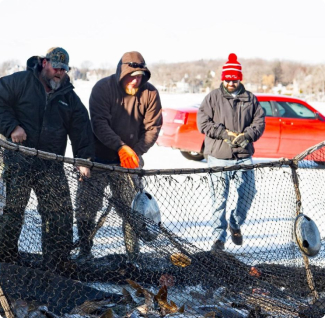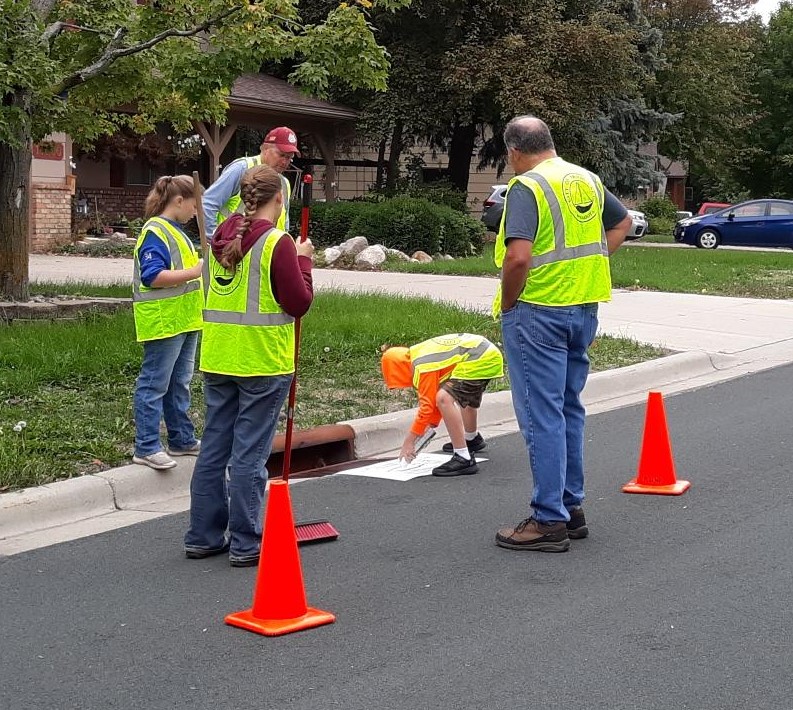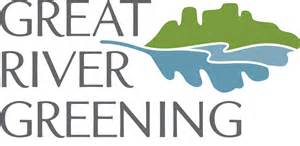Spring Lake Shoreline Restoration
Shoreline restoration prevents soil erosion from entering our lake, as well as providing filtration for other pollutants. Native plants provide bank stabilization, water filtration, and habitat improvement. Three main shoreline restoration techniques were used to stabilize these areas: brush bundles, cedar revetment and native plantings with erosion control blanket.
Project Location: County Road 12, north side of Spring Lake
Size: 0.23 acres
Ownership: Prior Lake – Spring Lake Watershed District
Status Details:
Initial restoration complete. Maintenance ongoing. Ongoing removal of invasive vegetation.
About this Project:
History of the Parcel
In 2013, the District acquired a quarter acre parcel of land with 350 feet of shoreline on County Road 12 along the north side of Spring Lake. The District acquired the land from Spring Lake Township with the intention of using it for a future shoreline restoration demonstration site. The District worked with Great River Greening, a non-profit organization, to restore the shoreline.
Prior the arrival of European settlers, this area was in a transitional zone between the Big Woods (maple, basswood and red oak forest) of Minnesota and Wisconsin and the oak savanna. The old growth oaks and basswoods present on the property have an open growth form which indicates that this site was once an oak savanna. Native oak savannas support a high species diversity, but they have become a very rare habitat as a result of land use changes over time. As a result of fire suppression, low quality trees and shrubs have inevitably grown up in the oak savanna, degrading the habitat and shading out the grasses and forbs which form an integral part of the oak savanna habitat.
Restoration Plans
As part of our restoration efforts, we removed the low quality trees and shrubs as well as any non-native species (e.g. buckthorn). This “daylighting” opened up the understory, allowing the oaks to thrive and sunlight to reach the low growing grasses and forbs found in an intact oak savanna. This helps cover the bare soil and protect it from erosion. Check out this excellent article from the St. Croix Research Station to learn more about how removing buckthorn can improve both habitat AND water quality.
Three main shoreline restoration techniques were used to stabilize these areas:
- Brush bundles
- Cedar revetment
- Native plantings with erosion control blanket
-
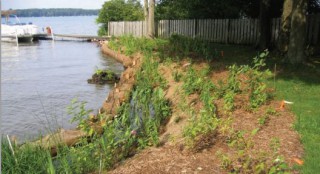
Native Plantings
Coir logs and erosion control blankets are placed along the shoreline and on exposed soil surfaces to stabilize the shoreline until the native seeds and plant plugs that are planted have a chance to get established and stabilize the soil. Coir logs are biodegradable erosion control rolls which are generally made from coconut fibers.
-
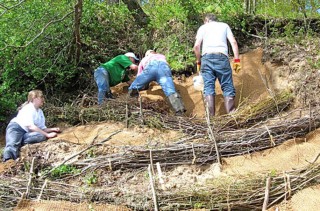
Brush Bundles
Brush bundles are buckthorn branches which have been tied together and are used on shorelines and slopes for stabilization and to introduce new plant material. Bundles reduce erosion, trap sediment and hold the soil in place until native vegetation becomes established.
Bare root shrubs were planted above the brush bundles to add additional support to the slope.
-
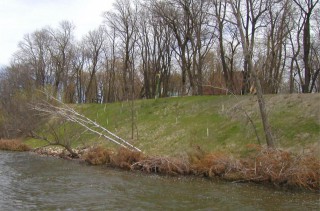
Cedar Revetment
Cedar revetments are placed along the shoreline to reduce erosion. Cedar trees are placed along the shoreline and anchored in place. Sediment collects in the trees’ branches, holding the sediment in place. By the time the trees have decayed, the shoreline will be stabilized by the roots of living plants.
Benefits
- The Spring Lake Shoreline Restoration Project will serve as an educational site which demonstrates shoreline restoration techniques.
- It will allow the public hands-on experience installing best management practices which prevent erosion and maintain shoreline health.
Timeline
- November 2015-April 2016: A survey of the parcel boundaries was completed before work began. Great River Greening began the restoration over the winter, removing buckthorn and low quality trees.
- May 21st, 2016: Shoreline restoration techniques were installed and bare soils were seeded with native plant species. 83 volunteers helped plant plugs of native grasses and forbs at our volunteer event on May 21, 2016.
- Summer 2016- ongoing: The initial site buckthorn removal and restoration was completed in Spring 2016. As buckthorn and other non-native, invasive species don’t give up after the first removal, ongoing maintenance is required. As the native plants become more established on the site, they should be able to better compete with the invasive species and less intensive maintenance will be required as time goes on.

